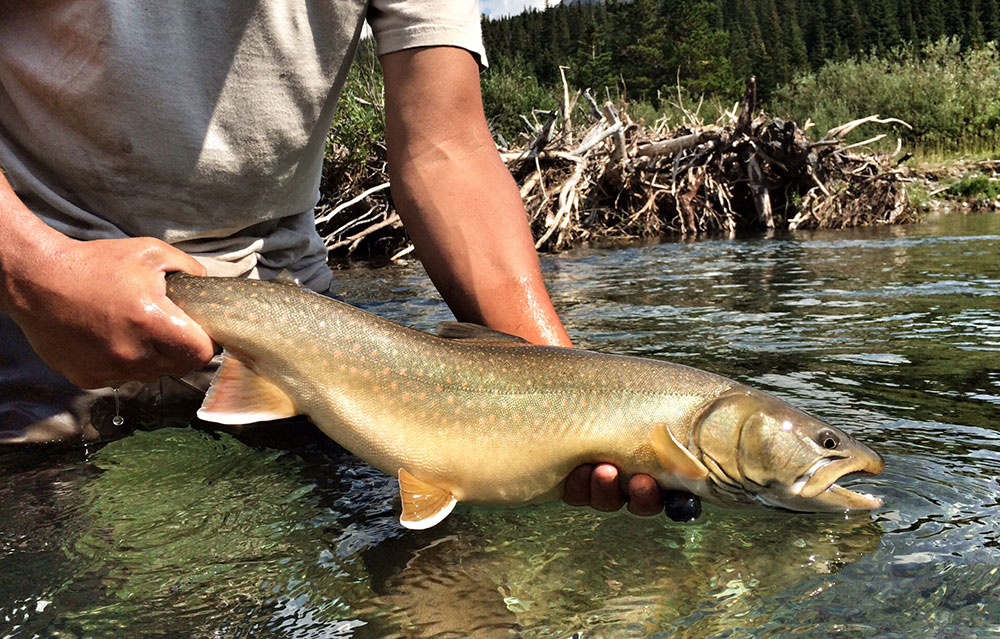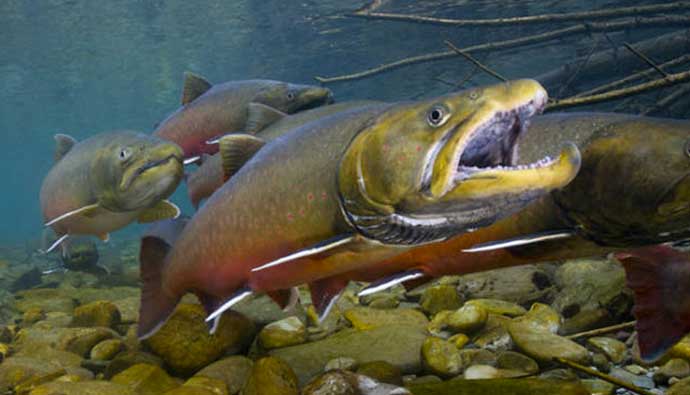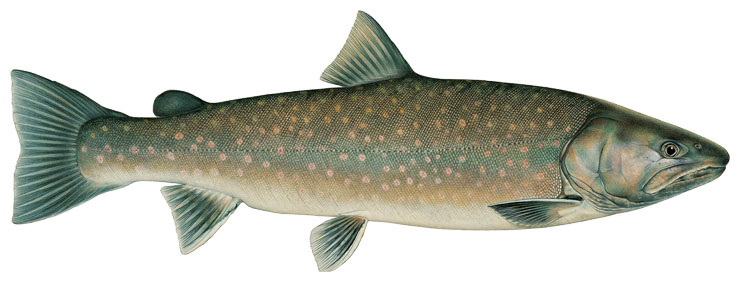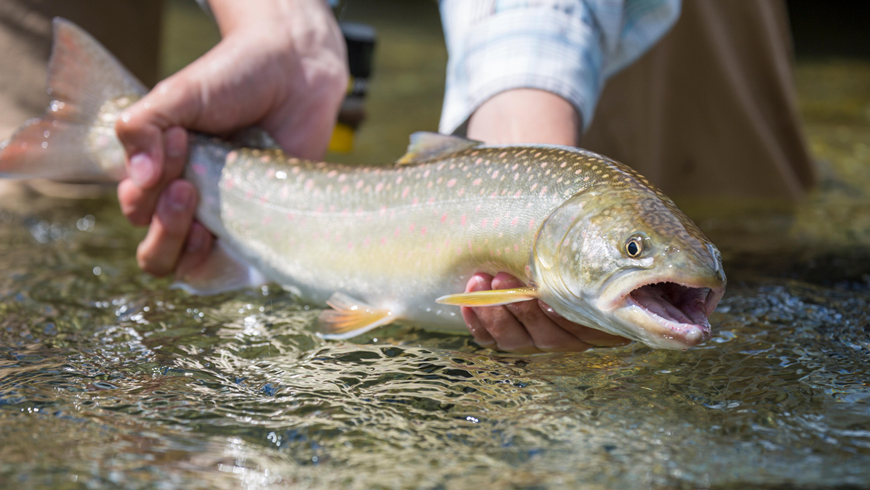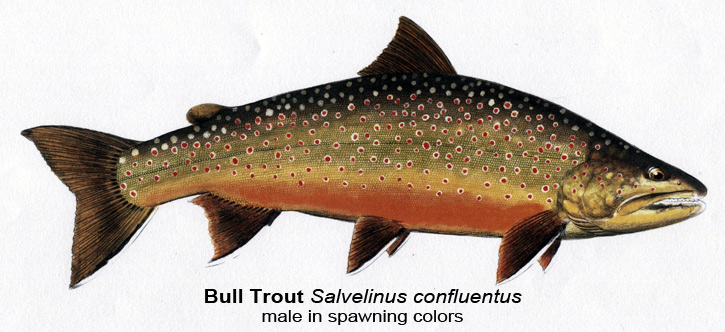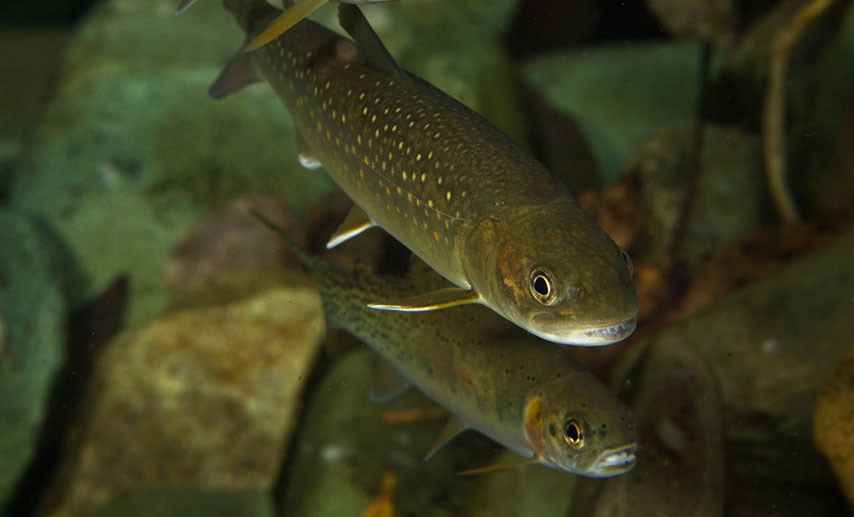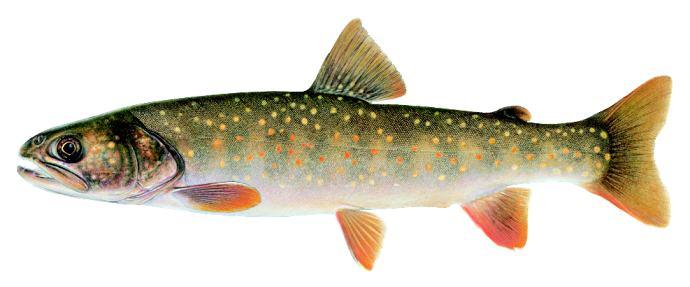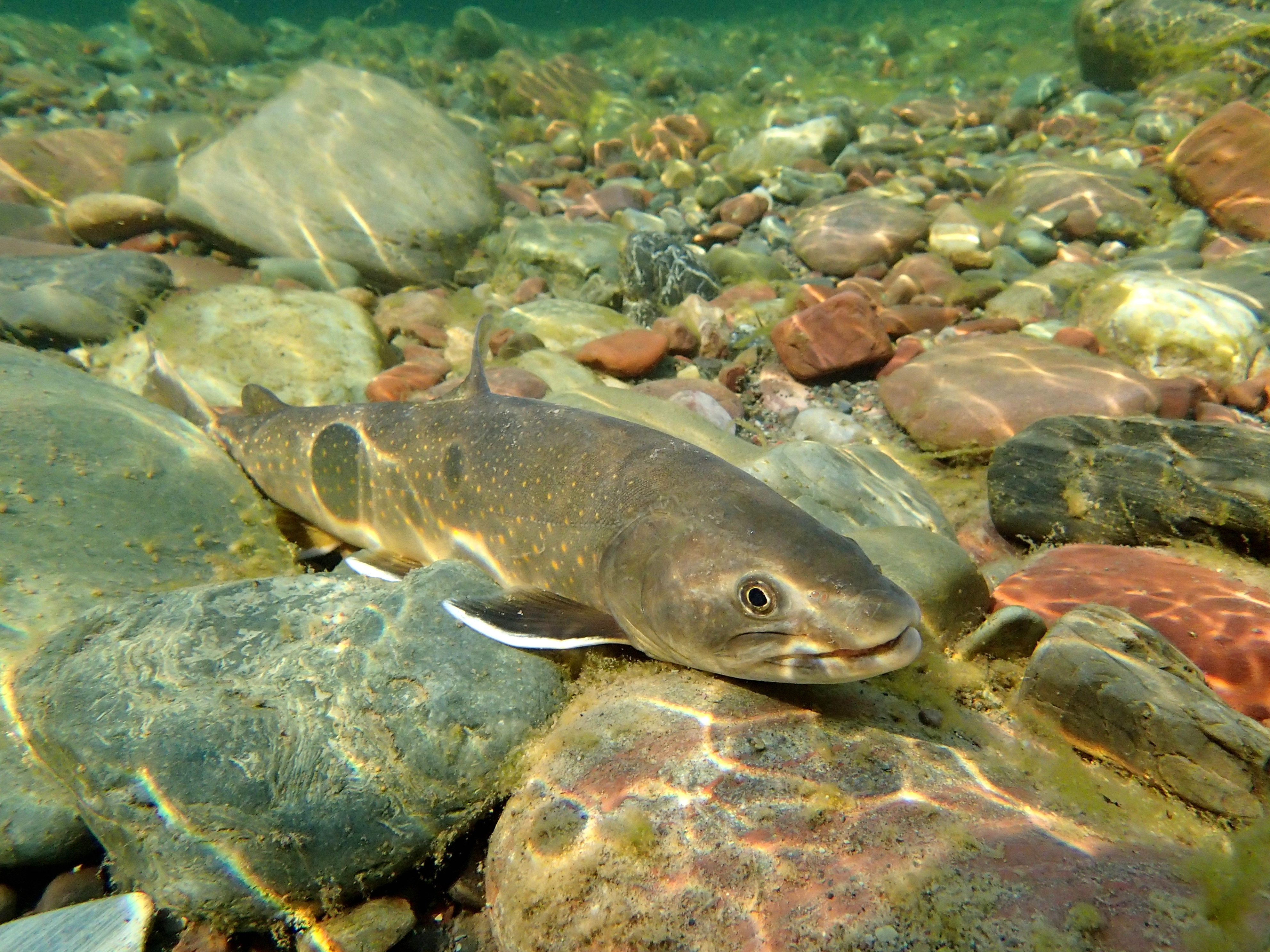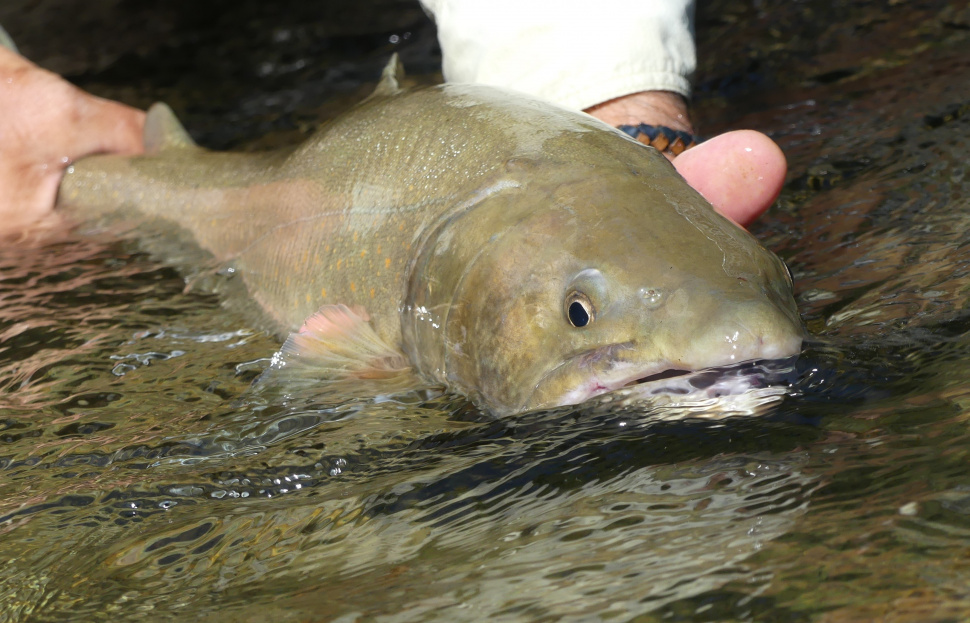The Bull Trout Population
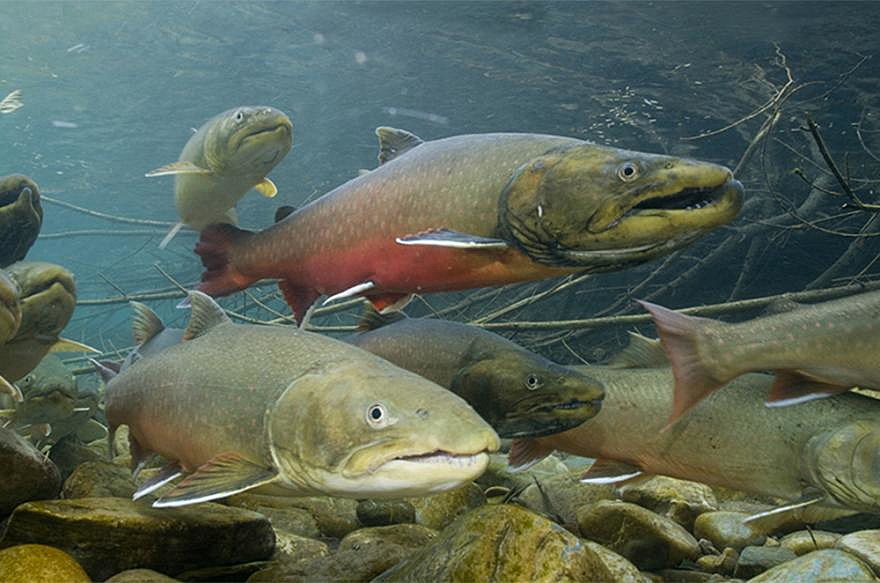
Migratory bull trout can be adfluvial migrating between streams where.
The bull trout population. Bull Trout are found in the Clark Fork and Flathead drainages of western Montana and their slowly declining trend has led to their designation as a threatened species. What do bull trout eat. Factors affecting the Castle bull trout population include habitat degradation fragmentation migration barriers illegal harvest and the introduction of non-native.
Bull Trout The Bull Trout was once found throughout the Columbia River Basin east to western Montana south to northern Nevada west to California and possibly as far north as southeastern Alaska. Bull Trout population assessing the populations status set-ting management objectives identifying and remedying the limiting factors and monitoring abundance and other popula-tion attributes Northcote 1997. This eventually took a toll on the bull trout population as this type of predation and competition prevents many from reaching maturity and subsequently reduces number of future spawning stock Bjornn 1991.
Results to date are encouraging. The main populations remaining in the lower 48 states are in Montana Idaho Oregon and Washington with a small population in northern Nevada. Were formerly only a minor segment of the bull trout population.
12112020 We used markrecapture data to estimate fish growth survival and trends in abundance for fluvial adult Bull Trout in the East Fork Salmon River Idaho. Our abundance and survival data which extends to the early 1990s illustrated positive. 20082019 In addition we employed markrecapture data to investigate Bull Trout population dynamics and assessed the life history characteristics aging growth spawning migrations and iteroparity to improve our understanding of Bull Trout ecology and diversity.
However long-term data sets quantifying Bull Trout abundance are rare and much of. In tributaries feeding the lake brook trout competed with young bull trout for food and in the lake lake trout preyed on bull trout Bjornn 1991. Small bull trout eat terrestrial and aquatic insects but shift to preying on other fish as they grow larger.
A substantial body of qualitative and quantitative data estimates both historical and current Bull Trout population sizes from Alberta and to a lesser extent British Columbia. Bull trout populations that thrived in these waters for thousands of years crashed rapidly with dramatic declines often appearing within 30 years after initial detection of lake trout. Diverse life history strategies are also important for the persistence of indi-.

